- Fallout Shelter Best Weapons Guide - March 29, 2023
- Fallout Shelter Legendary Dwellers Guide - March 21, 2023
- Diamond City Guide - January 31, 2023
Intro
Fallout 3 vs New Vegas is probably the most frequently held debate within the Fallout community. Modern Bethesda vs Modern Obsidian: Who does Fallout better?
The debate makes sense. Fallout 3 and New Vegas utilized the same game engine and came out within two years of one another. And generally speaking, New Vegas usually wins this debate.
But what if we only wanted to compare Bethesda Fallout games (Though if you’d like to see a Fallout 3 vs New Vegas comparison, we’ve got you covered)? That would mean giving New Vegas a well-deserved break from the arena of debate and slotting in Fallout 3’s big brother, Fallout 4.
Fallout 4 is Bethesda’s second official Fallout game (Not including Fallout Shelter). Bethesda got off to a rocky start with Fallout 3. Many legacy fans of Fallout weren’t over the moon about the radical change in the gameplay loop of their favorite franchise.
How much did Bethesda improve upon this modern formula with Fallout 4? Is it a superior Fallout experience to Fallout 3 across the board, or did Bethesda take one step forward, two steps back? Let’s find out.
Main Differences Between Fallout 3 vs Fallout 4
The main differences between Fallout 3 vs Fallout 4 are:
- Fallout 3 and 4 take significant steps away from the franchise’s roots as an isometric, turn-based RPG. Fallout 3 is primarily a first-person/third-person action RPG. I would classify Fallout 4 more as an open-world, looter shooter with RPG elements than I would an action RPG like Fallout 3. Fallout 4 is significantly superior as a shooter than Fallout 3 but is a more diluted experience as an RPG.
- Both of Bethesda’s main series Fallout titles have heavy streamlining, but Fallout 4 takes several leaps away from the RPG category that Fallout 3 somewhat fits into as a game, whereas Fallout 3 has a Karma system, skills, and item conditioning, Fallout 4 has virtually none of those things. Fallout 4, instead, has a barebones reputation system with the game’s primary factions, perks, and 99% of weaponry and armor no longer suffering from conditioning issues.
- Fallout 3 only has a handful of weapons you can craft and no real mod options, whereas in Fallout 4, modding your weapons is how you optimize your weapon loadout. Almost every weapon in the game is heavily modifiable. Armor is now modular and heavily modifiable, like weapons. There are a lot more customization options regarding gear than in Fallout 3.
- In Fallout 3, power armor is literally a set of armor. In Fallout 4, power armor is an exoskeleton. Power Armor in Fallout 4 doesn’t really make you that much bigger. In Fallout 4, you tower over people while wearing it. The benefits of Power Armor have also skyrocketed. Like standard armor, Power Armor is highly customizable and offers various build options for different gameplay styles.
- Modifying weapons and armor all require junk components, making junk the most valuable items in the game. In Fallout 3, they were caps fodder. Expect to spend a lot of time in Fallout 4 looking for aluminum cans or nuclear material.
- The story in Fallout 4 is nothing to write home about, but it does at least give you more options than Fallout 3 did. In Fallout 3, you had no choice but to tag along with the Brotherhood of Steel. In Fallout 4, there are four factions that you can join forces with during the main storyline.
Writing and Narrative
Fallout 3

Fallout 3 takes place in the Capital Wasteland, aptly named since it consists of the ruins of Washington, D.C. Some areas of Virginia, Pennsylvania, and Maryland are also present.
You start the game as a resident of Vault 101 with your father. One day, sometime during your 19th year, your father leaves the Vault. It sends the Vault into chaos, and you have no choice but to follow in his footsteps and venture into the Capital Wasteland to find him.
The first half of the story revolves around finding your dad. After you and Liam Neeson are reunited, the plot shifts to helping your dad achieve his goal. Years before you were born, your parents attempted to restart the water purifier in the Jackson Memorial. The Capital Wasteland is barren, and its citizens are unhealthy due to a lack of clean water. If they could restore the water purifier, they could save the Capital Wasteland.
Those plans and dreams changed when you were born. Your mother died, and your dad abandoned his dreams in favor of providing you with a safe life in Vault 101. But with you now an adult capable of surviving on your own, your dad is intent on finishing what he started. That’s why he left.
Act 2 of Fallout 3 is where the laziness in storytelling really starts to rear its ugly head. The plot takes multiple elements of Fallout 1 and 2, like the quest for clean water, the G.E.C.K., and the Enclave, and tells a much worse story.
The Enclave is a shell compared to the Fallout 2 incarnation. Colonel Autumn is comically villainous. The Enclave’s leader Eden, if you can even call him that, is an embarrassment to the faction. The word conviction doesn’t seem to be in his vocabulary. It feels like a weak attempt to mirror events from Fallout 1 (It’s not the first or only time Fallout 3 attempted this) that falls flat.
The other notable players in Fallout 3 don’t fare much better than the Enclave. The Brotherhood of Steel and the Outcasts have potential, but Bethesda fails to tap into it. Super Mutants have regressed into being nothing more than ogres with literal gore bags hanging everywhere they congregate. They’re stone-stupid, and anyone who has played Fallout 1 or 2 knows that’s not how all Super Mutants are. Talon Company comes off as a well-established mercenary group but is little more than goth combat armor raiders. Companions are duffle bags with legs. Bethesda didn’t bother to flesh them out or give them their own companion quests.
Dialogue in Fallout 3 is decent, but nothing stands out as exceptional writing. It’s all very middle of the road (At best). The ending (s) of Fallout 3 does stand out, however. It stands out as one of the stupidest endings I’ve ever seen.
One of the reasons I dock points from Fallout 3’s narrative is this is more your dad’s story than yours. The plot revolves around finding him and then shifts to finishing his work. The original release of Fallout 3 does a poor job of shoehorning in the concept of following in your dad’s footsteps from start to finish.
Many players, myself included, ignore the main storyline for most of the game and complete it as an afterthought. The side quests are significantly better, with a few standouts like The Superhuman Gambit, Blood Ties, Oasis, and Reilly’s Rangers. Though, this is more due to gameplay than the writing.
Bethesda played it safe with Fallout 3. Maybe they did it because they didn’t want to ostracize legacy Fallout fans too much. That’s why they took a bunch of parts from Fallout 1 and 2.
But the plan backfired. Nearly everything Bethesda took from the first two games is significantly worse. They would’ve been better off doing their own thing. And that’s what they did in Fallout 4.
Fallout 4
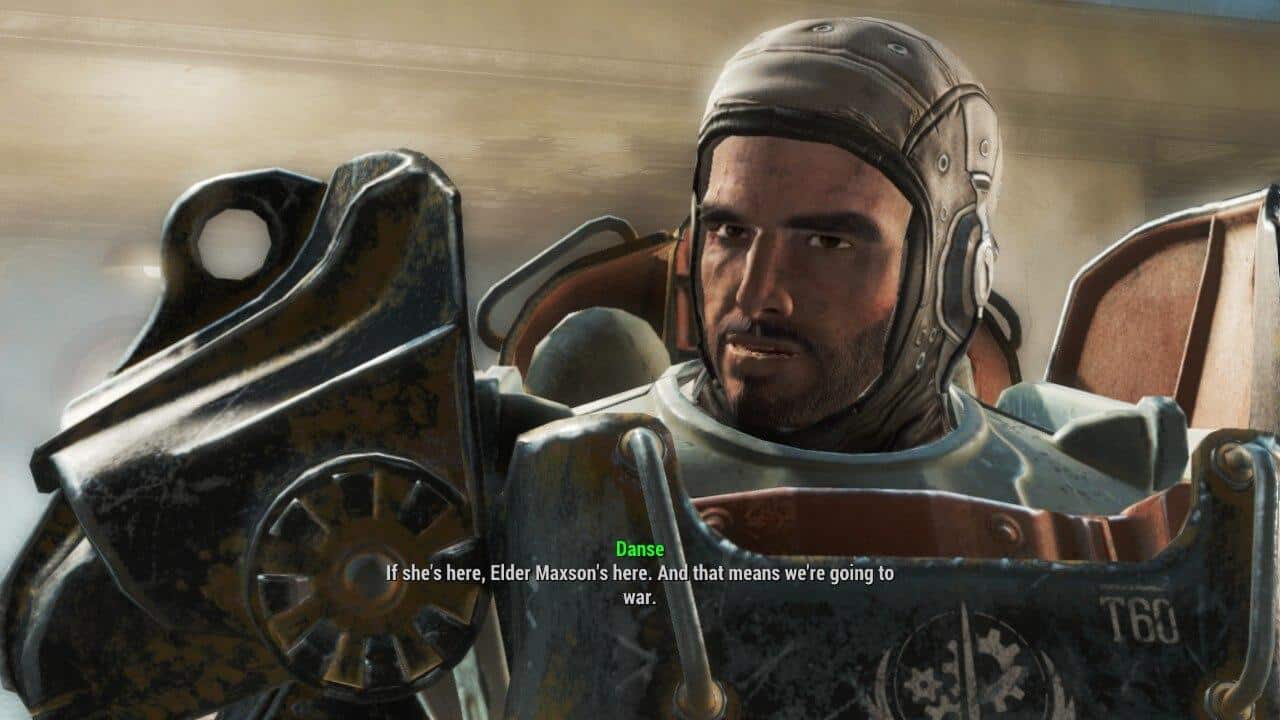
Fallout 4 takes place in Massachusetts, with an emphasis on Boston. You step into the shoes of a pre-War survivor of the fictional town of Sanctuary. The story kicks off right as the nukes that destroyed the world in the Great War dropped. You, your spouse, and your son Shaun have spots in the local Vault 111 and make it underground before Sanctuary gets a nuclear makeover.
Vault-Tec being Vault-Tec, your time down in the Vault isn’t long and doesn’t go according to what Vault-Tec told you. Next thing you know, 200 years have passed, your spouse is dead, and someone kidnapped your son. That’s right; Act 1 of Fallout 4 is about finding a family member. Sound familiar?
After Act 1 ends, Fallout 4 follows in its predecessor’s footsteps and shifts to you, the Sole Survivor, deciding the future of the Commonwealth. The Brotherhood of Steel from the Capital Wasteland is back, but unlike Fallout 3, you don’t have to side with them. There are three other factions that you can align yourself with for the finale of the story.
Joining one faction will make you permanent enemies with at least one of the others. So, there is more consequence to your actions in the story than in Fallout 3. For that, I can give Bethesda credit. But that’s kind of where the credit starts to run out.
The headline faction of Fallout 4 is the Institute. The shadowy boogeyman of the Commonwealth. They’re the most technologically advanced organization in the region and also the stupidest.
Their motivations more or less don’t exist. They say they want to help the Commonwealth but do things like wipe out entire local governance and replace people with synths. They experiment for the sake of experimenting, and that’s it. They are a painfully stupid and underwritten faction, and Bethesda gives players little reason to like or join them.
The Institute isn’t the only faction in Fallout 4 that falls flat. The Minutemen are the resident boy scouts of the Commonwealth. They’re the good guys of the story but lack vision. They want to take down the Institute, but after that? Post-apocalyptic cops on a beat that never ends.
The Railroad free synths. That’s their end all be all. They only care about freeing synths and have no overarching plans for the Commonwealth. The Railroad being a big player is very far-fetched. Compared to the other factions, they feel pretty minor.
Lyons’ Brotherhood of Steel is back and now under the leadership of Elder Arthur Maxson, a child you meet in the Citadel in Fallout 3. Maxon’s Brotherhood of Steel is a mix between Lyons’ and the classic Brotherhood of Steel. They care much about acquiring pre-War tech and securing it for themselves, but they also spend time clearing out Super Mutants and raiders. Naturally, they feel like the Institute abuses technology and that synths are abominations and vehemently oppose them.
Gunners have taken the place of Talon Company. And like Talon Company, they’re glorified raiders. The only difference is they traded in their black for army camo. Super Mutants are once again brain-dead orcs with little substance.
Companions are better, at least. They now have personalities and companion quests. The Sole Survivor can bond with them and even start relationships with some. Each companion has likes and dislikes, and if you piss them off enough, they leave you forever. There being more consequences to your actions is good.
What’s not good is the dialogue. It maintains the relative mediocrity from Fallout 3. Making it worse is Bethesda’s decision to implement a dialogue wheel system. Often the dialogue options are vague and don’t give a clear idea of what you’ll say. Also, often enough, all four dialogue options are all just variations of yes or no. Illusion of choice is one of this game’s biggest flaws.
The quality of writing for quests in Fallout 4 is average at best. The main storyline is pretty pedestrian, and the plot twist in Act 2 is very predictable. Side quests are okay. Don’t get me wrong; there are fun side quests like The Big Dig and The Silver Shroud, but none of the writing here is particularly enthralling.
But most controversy/criticism of Fallout 4’s writing is due to the retcons. Drugs, Power Armor, a ghoul stuck in a kitchen appliance for 200 years despite needing to breathe, eat, drink water, etc. Lots of things about Fallout are different. Many fans of the franchise don’t like the changes.
Presentation
Fallout 3
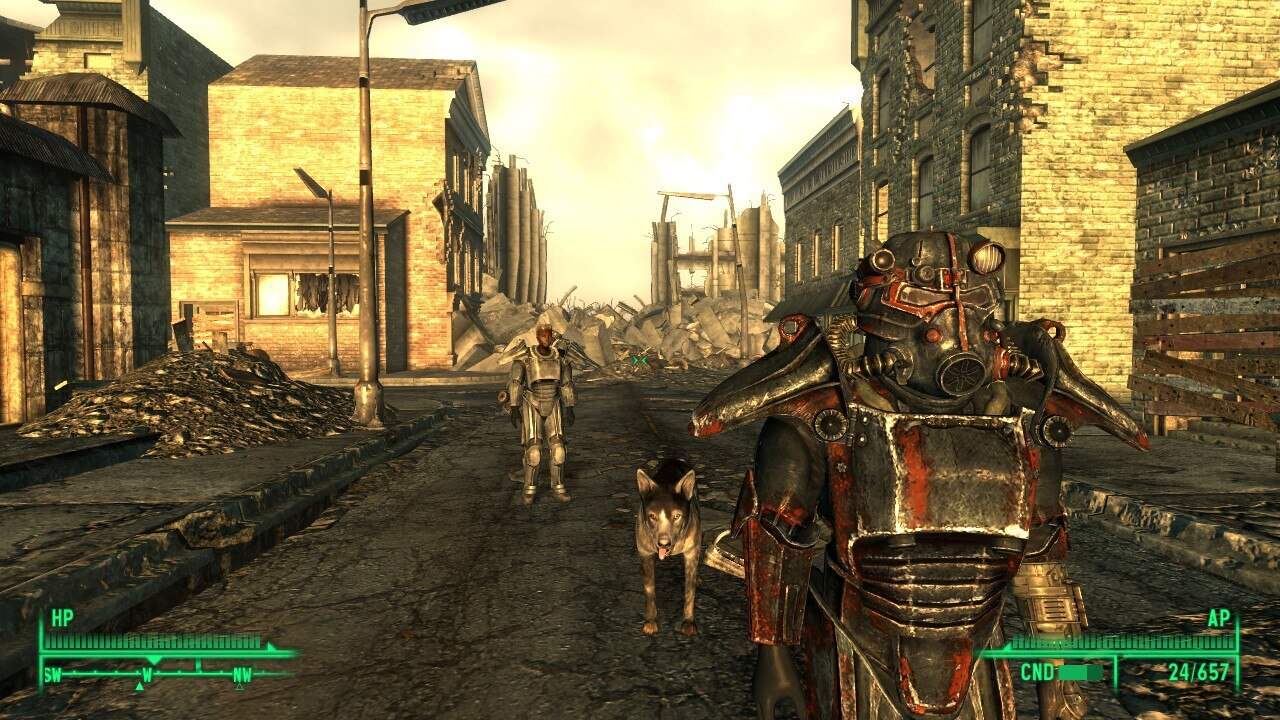
The aesthetic Bethesda was going for allows Fallout 3 to maintain a degree of timelessness. An atmospheric green tint covers the entire Capital Wasteland, with plenty of shades of brown and grey thrown into the mix. Fallout 3 is a certifiable post-Apocalyptic looking wasteland.
While containing plenty of layers of subtle goofiness, Fallout 3 maintains the brutality of the violence that Fallout 1 and 2 made famous. Even without the legendary bloody mess perk, heads explode into jibs, and limbs fly regularly. So much so that you’d think George Lucas or George R.R. Martin had something to do with this. I don’t know who created the 10MM pistol in the Fallout universe, but give that person a raise. You’d think you were shooting a desert eagle. That’s on steroids.
Fallout 3 shows its age visually, but nothing compromises graphical integrity or makes the game hard to play in 2022.
Fallout 4
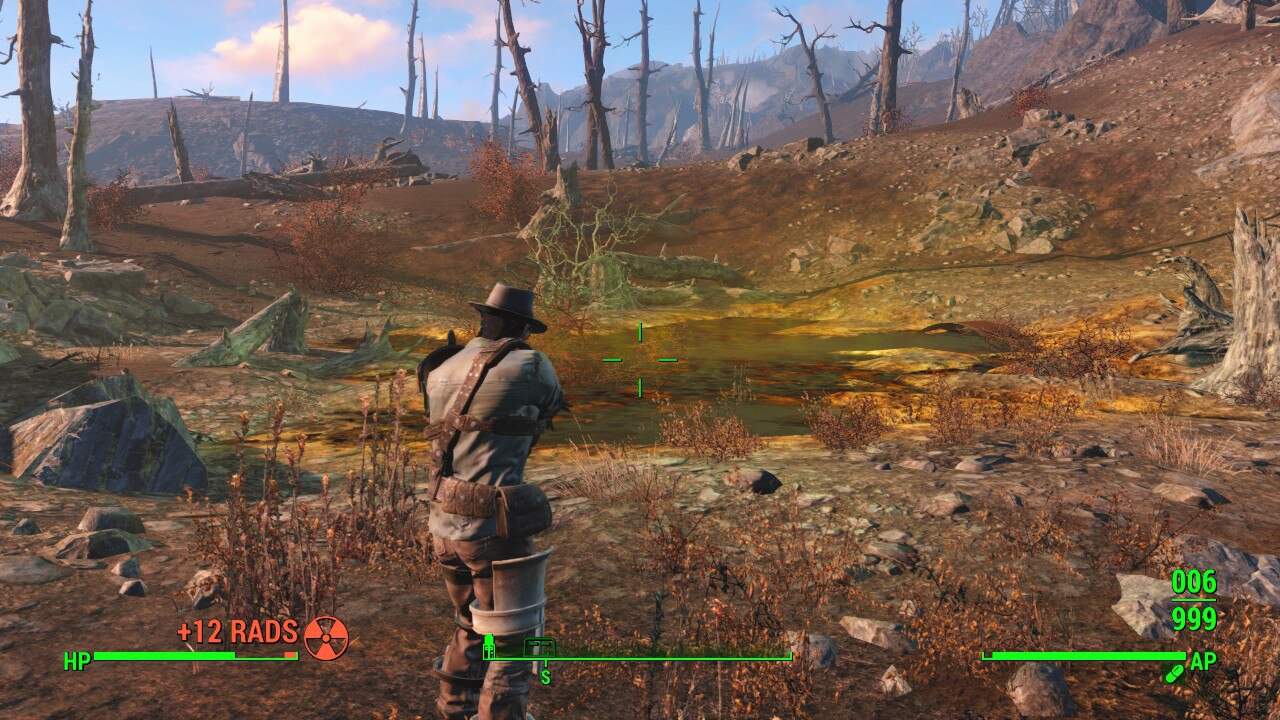
Released seven years after Fallout 3 and on another generation of consoles, Fallout 4 was a massive graphical upgrade. Unlike Fallout 3, the world is a lot more colorful and vibrant. It’s a sprawling open world.
From the derelict neighborhoods of downtown Boston to the radioactive Glowing Sea, Fallout 4 has far more variety in the locale than its predecessor. That goes a long way toward keeping exploration feeling fresh.
The real-time combat feels and looks much better, including the parts where enemies suffer Mortal Kombat fatality levels of brutal deaths. Including you. You haven’t played Fallout 4 until you watch your Sole Survivor run into a Super Mutant Suicider and turn into a dismembered torso in slow motion.
There are a few weak spots here and there, like hair looking certifiably past gen, even at the time of release. But overall, visually speaking, Fallout 4 holds up moderately well in 2022.
World-Building and Design
Fallout 3
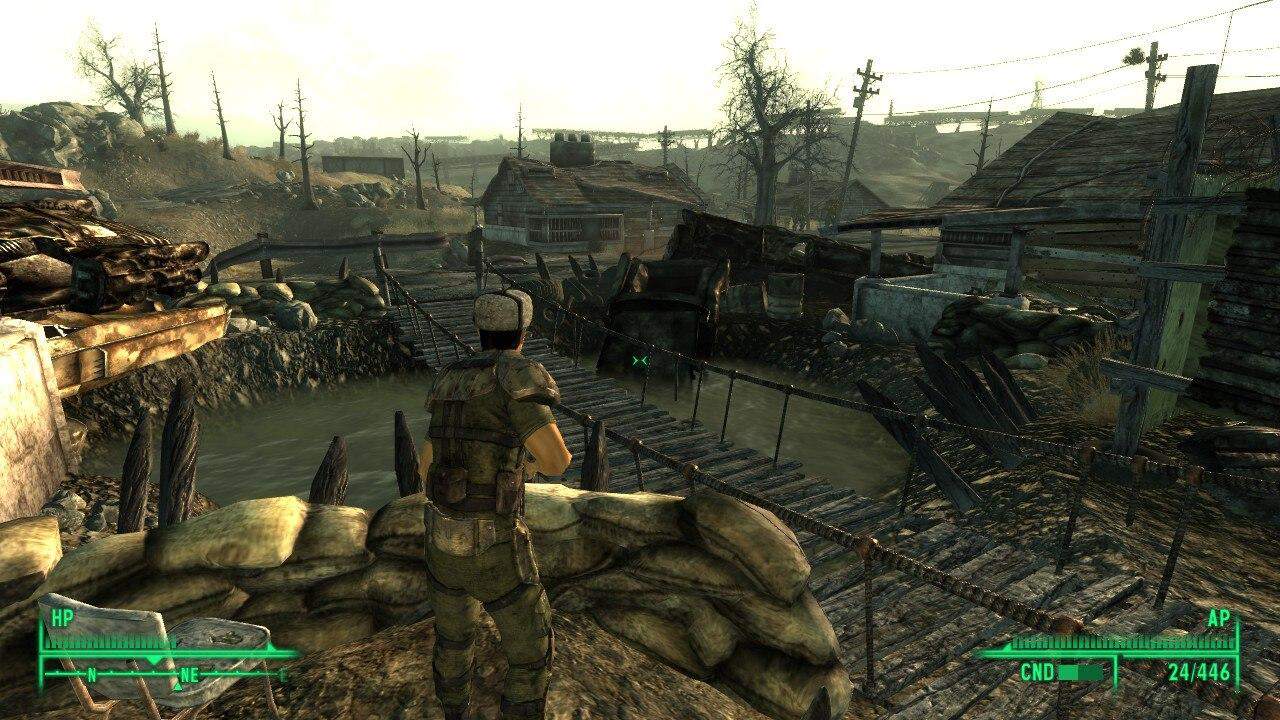
If there’s one thing that Bethesda is pretty consistent on, it’s world-building.
Fallout 3 looks and feels like what it is: a barren wasteland devoid of hope. In most cases, a game compromised primarily of shades of green, brown, and grey would be on the game critic’s chopping block for being ugly and dull looking. But in the immortal words of Todd Howard, for Fallout 3, it just works.
Better than most developers, Bethesda managed to take largely copy-and-paste dungeons, turn them into metro stations, and make most of them fun to explore. Don’t get me wrong; some metros feel too samey and are completely ignorable on repeat playthroughs. But for the most part, they add to the gloom and doom of the Capital Wasteland. The metros are just as depressing and dangerous as topside. Few places in the Capital Wasteland are safe.
But where Fallout 3 truly shines is environmental storytelling. All across the Capital Wasteland, within the various locations, there are stories. Cleverly hidden in room corners, bathroom stalls, office desks, and abandoned bunkers, you come to learn what happened here and to the people several hundred years ago.
And seeing how this is a Fallout game, there’s humor in the environmental storytelling too. Teddy bears playing gnomes in chess or an abandoned shelter that was home to someone obsessed with plungers. It’s equally incredible and disappointing that Fallout 3’s environmental storytelling is far superior to narrative storytelling.
Fallout 4
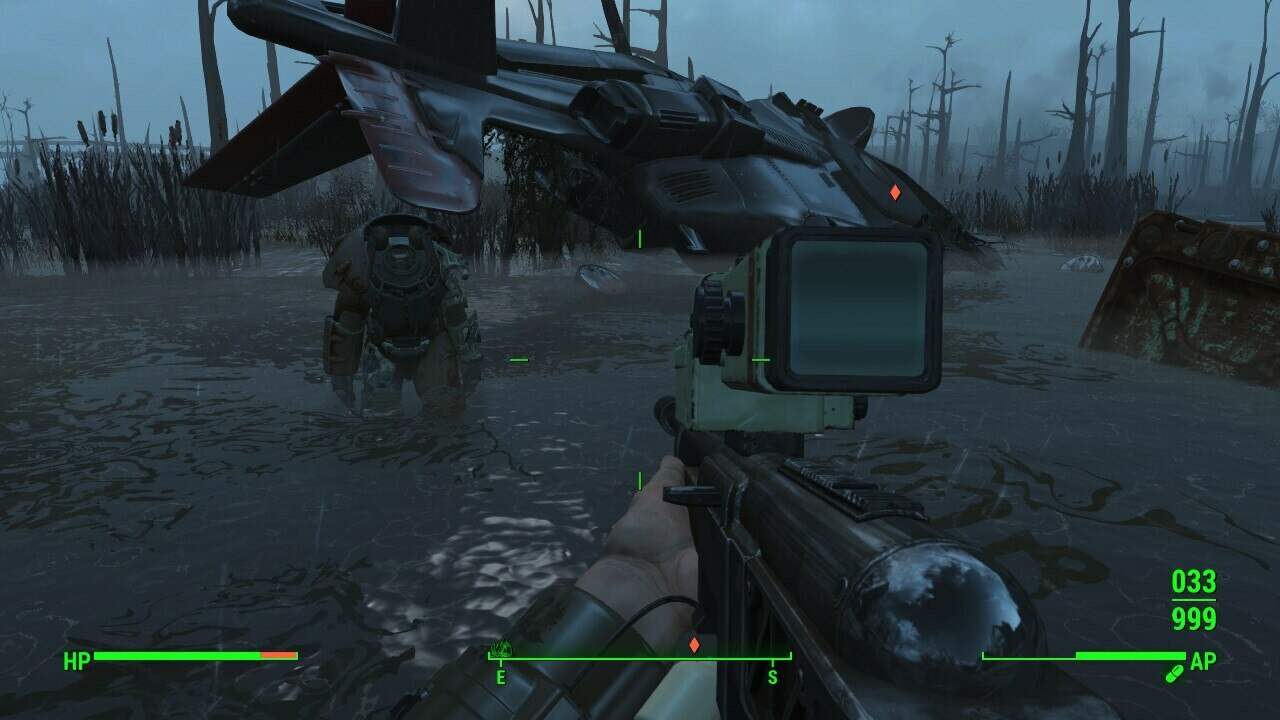
Fallout 4’s world-building is a little wonky. Sure, you know it’s a Fallout game thanks to franchise staples like Super Mutants, Power Armor, and Nuka-Cola. But for a moment, picture Fallout 4 without the recognizable Fallout inclusions. What’s left is a relatively generic open world that someone new to Fallout could easily mistake as a different game entirely.
Not everyone loves the green tint in Fallout 3 or the orange tint in Fallout: New Vegas. But love them or hate them, both gave their games distinctive Fallout looks. Fallout 4, on the other hand, is bright and colorful. Sure, the Commonwealth sucks, and yes, it’s a post-apocalyptic setting, but it doesn’t feel as much like a Fallout game. It has some persistent tonal issues that make it clear Bethesda has some understanding of the Fallout aesthetic but, at the same time, doesn’t.
Audio and Score
Fallout 3
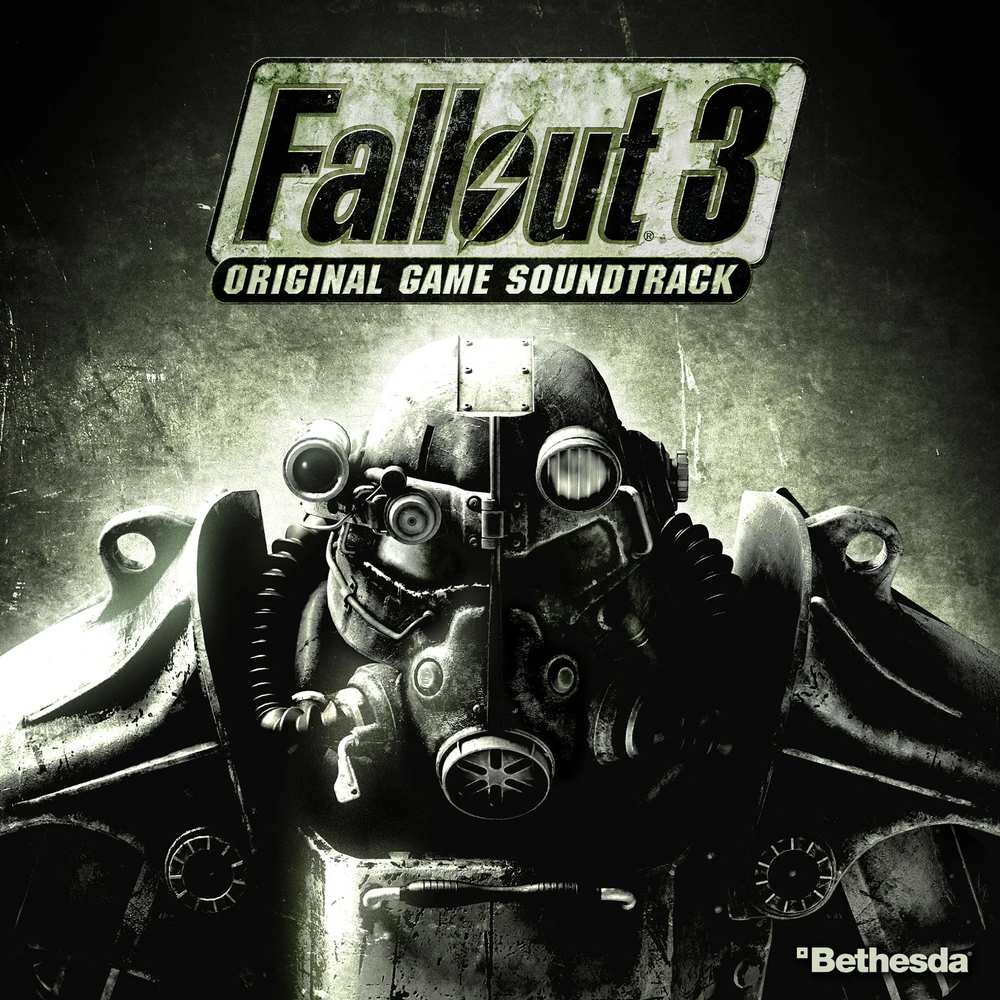
If you’ve played any Fallout, you know the drill here. 99% of the tunes are classics from the 40s and 50s; The Ink Spots, Roy Brown, Ella Fitzgerald, the works. If there’s one element of Fallout that receives universal praise, it’s the music. Fallout can make any into a fan of these yesteryear tunes.
But another crucial element of Fallout’s score is the ambient music. The ambient music sets the tone for every locale and combat scene. And again, credit where it’s due; Bethesda nails it.
I find Fallout 3’s ambient music to match perfectly in almost every situation. The title theme sets the tone and gets you pumped up to play Fallout 3. New World Order and Price of Honor match the militaristic Brotherhood of Steel and Enclave. Unwelcome Guest and Metal on Metal are loud and frantic audio backdrops to combat.
No Way Out but Through and Clues in the Darkness are eerie and make venturing through metros even creepier. Gotta Start Somewhere, Old Lands, New Frontiers, and Wandering the Wastes are more subtle and depressing. Perfect background noise for any Lone Wanderer traversing the Capital Wasteland.
As for the other sounds, they’re okay. The melee weapons sound fine. Gunfire and explosives don’t sound meaty, but they do what they’re supposed to do.
Fallout 4
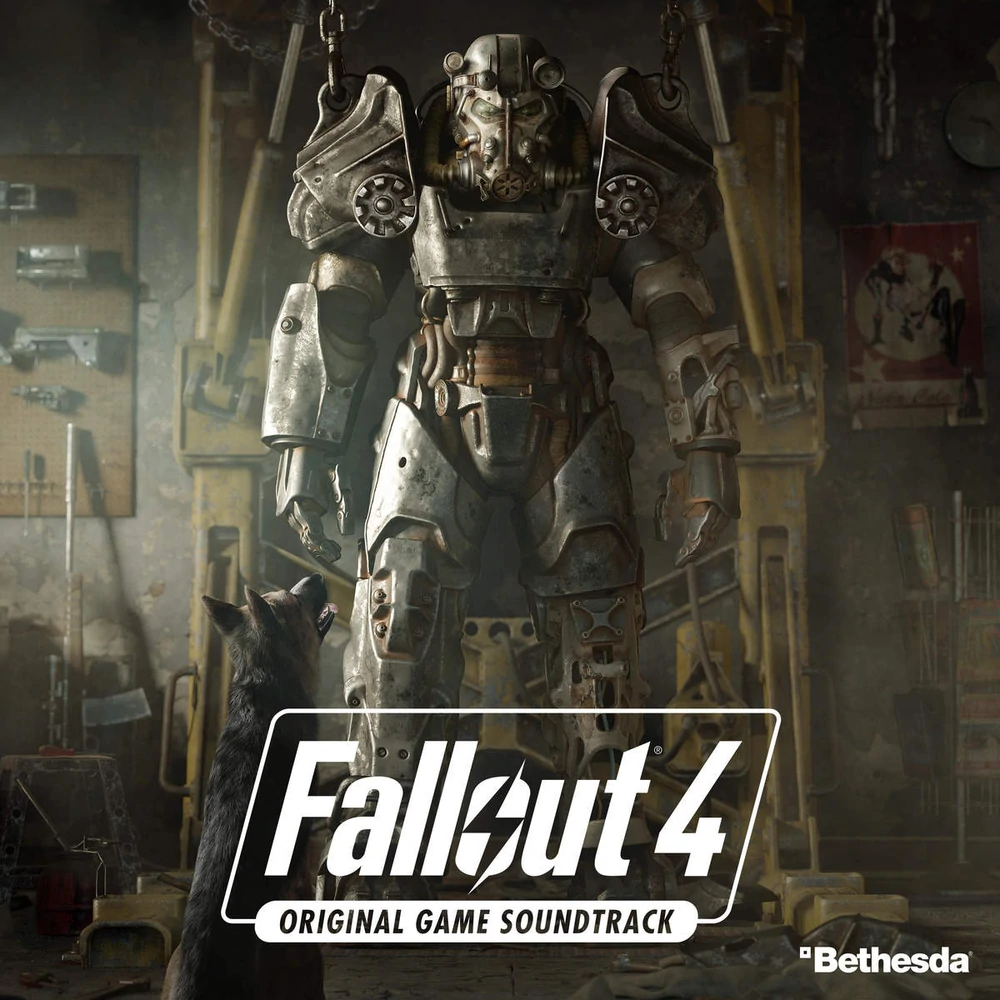
Fallout 4 maintains the quality standard when it comes to the 40s and 50s music on the radio. Roy Brown is back, and so are other musicians like Ella Fitzgerald and The Ink Spots. Betty Hutton, Billie Holiday, and The Dominoes join in on the fun.
But unfortunately, Fallout 4 is a step backward regarding ambient music.
The first problem is Fallout 4’s ambient music is too loud. It drowns out the dialogue between characters which can get really annoying. But the biggest problem I have with it is that I find it’s significantly less thematically fitting than ambient music in Fallout 3.
Not all the ambient music is poor. Portal to the Past, Wandering – The Foothills, Pt. 1, and No Voices, No Cries are standout favorites of mine. But overall, I think Fallout 4’s ambient music misses the mark. To drive the point home, in Fallout 3, I have no issues playing with only the ambient music. In Fallout 4, I am seldom not tuned in to Diamond City Radio.
Fallout 4 does pull ahead in other sound departments like gunfire, explosions, and voice actor. But to be fair, it would be totally unacceptable if it didn’t. Fallout 4 does have eight years over Fallout 3, after all.
Fallout 4 is no Doom Eternal and isn’t winning any sound design awards, but it’s a significant step in the right direction.
Gameplay and Core Mechanics
Fallout 3
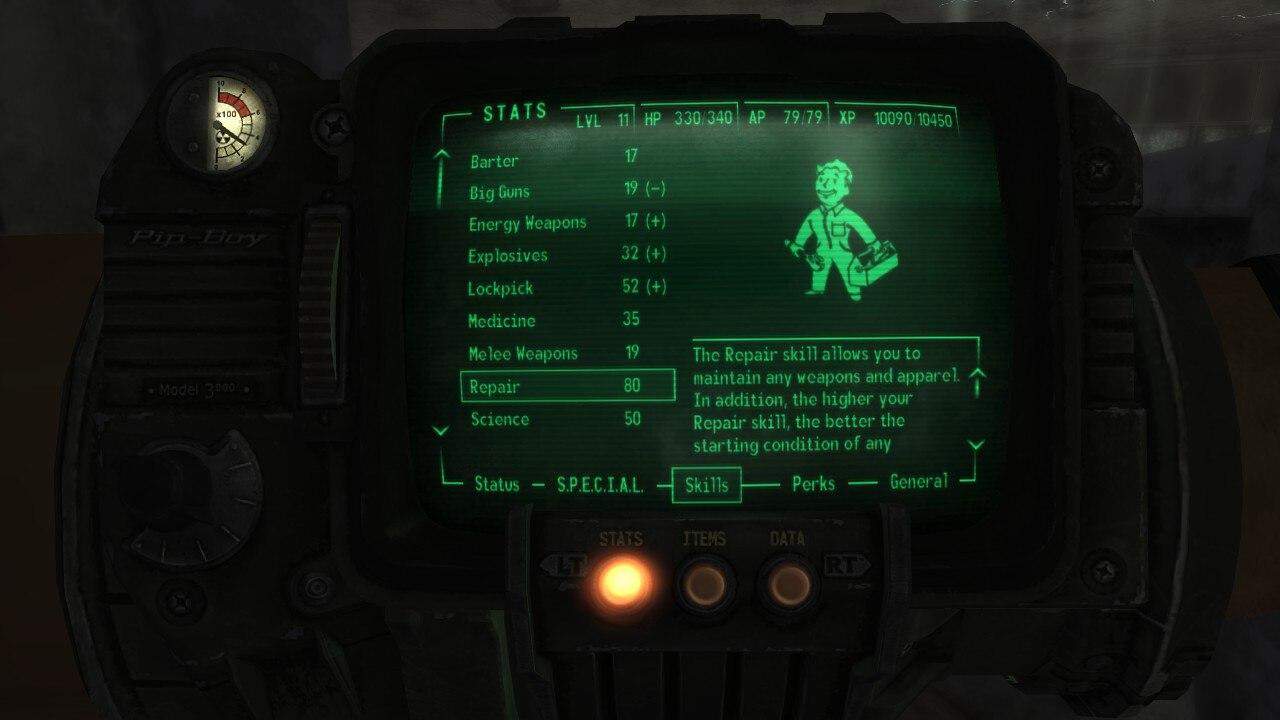
Fallout 3 made the decision to modernize Fallout’s combat and make it primarily real-time.
Fallout 3 strips much away from what was present in Fallout 1 and 2. Many skills and perks are gone. Classic Fallout perks often had pros and cons, making it tougher to decide which to choose. In Fallout 3, these downsides are gone.
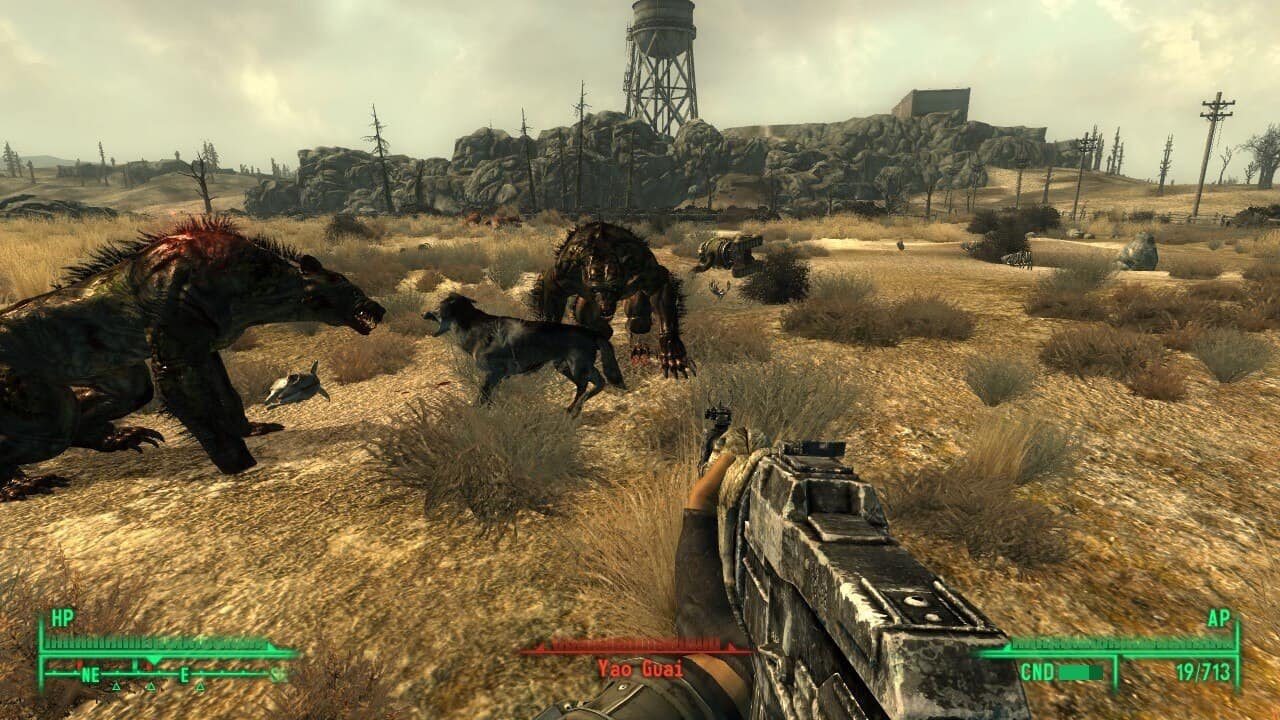
Fallout 3 made the decision to modernize Fallout’s combat and make it primarily real-time. The combat isn’t bad enough to make it an unpleasant gaming experience, but it leaves much to be desired. Melee combat is okay, except when against another melee fighter. Then it’s clunky and awful.
Bethesda did do a pretty good job with V.A.T.S. You can’t target people in the eyes or groins anymore, and melee/unarmed can’t target any specific body parts, but V.A.T.S. is incredibly effective. With the correct character build, it’s downright broken.
Fallout 4
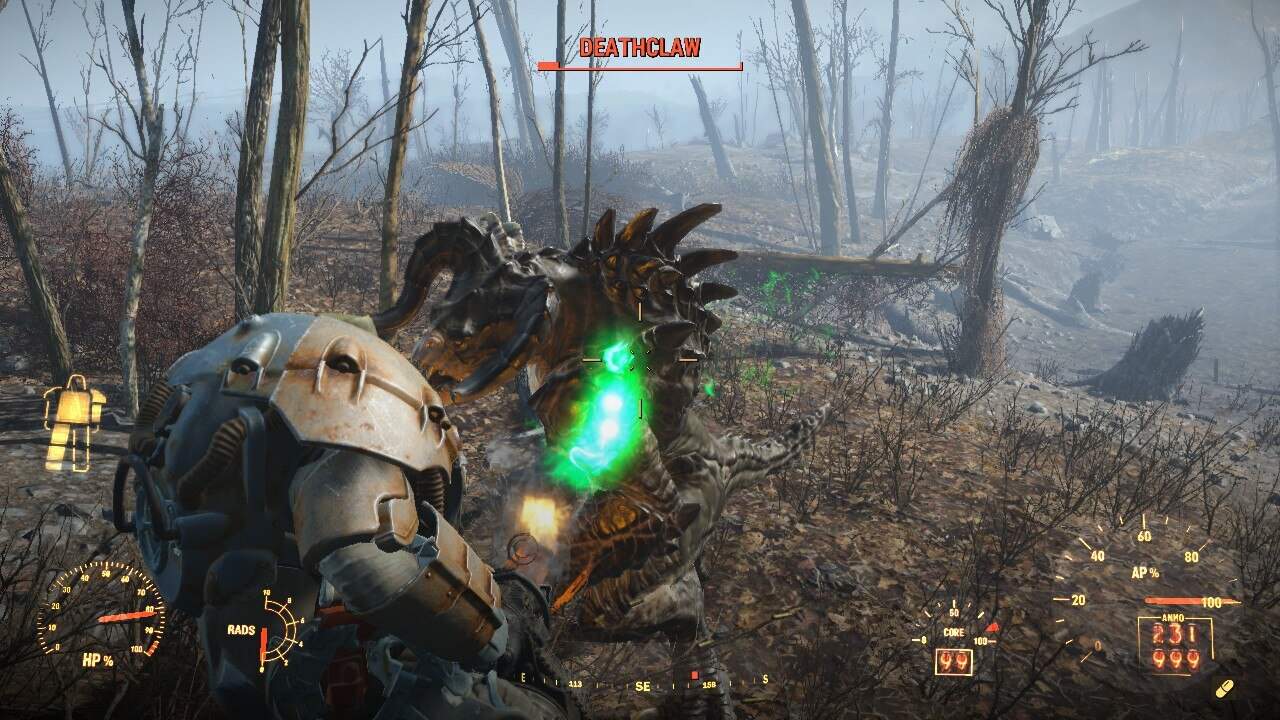
One of Fallout 4’s greatest strengths is the changes to live combat. It’s not groundbreaking gunplay, but it’s good. About what you would expect from a modern first-person/third-person shooter. In Fallout 4, it’s a blast (Pun intended) to go into a raider den with your guns blazing.
Melee combat isn’t nearly as clunky anymore. Unarmed combat now has quite a few special moves and combos. You can now powerslam raiders, and it’s hilarious and glorious. All we need is Jim Ross shouting he’s broken in half.
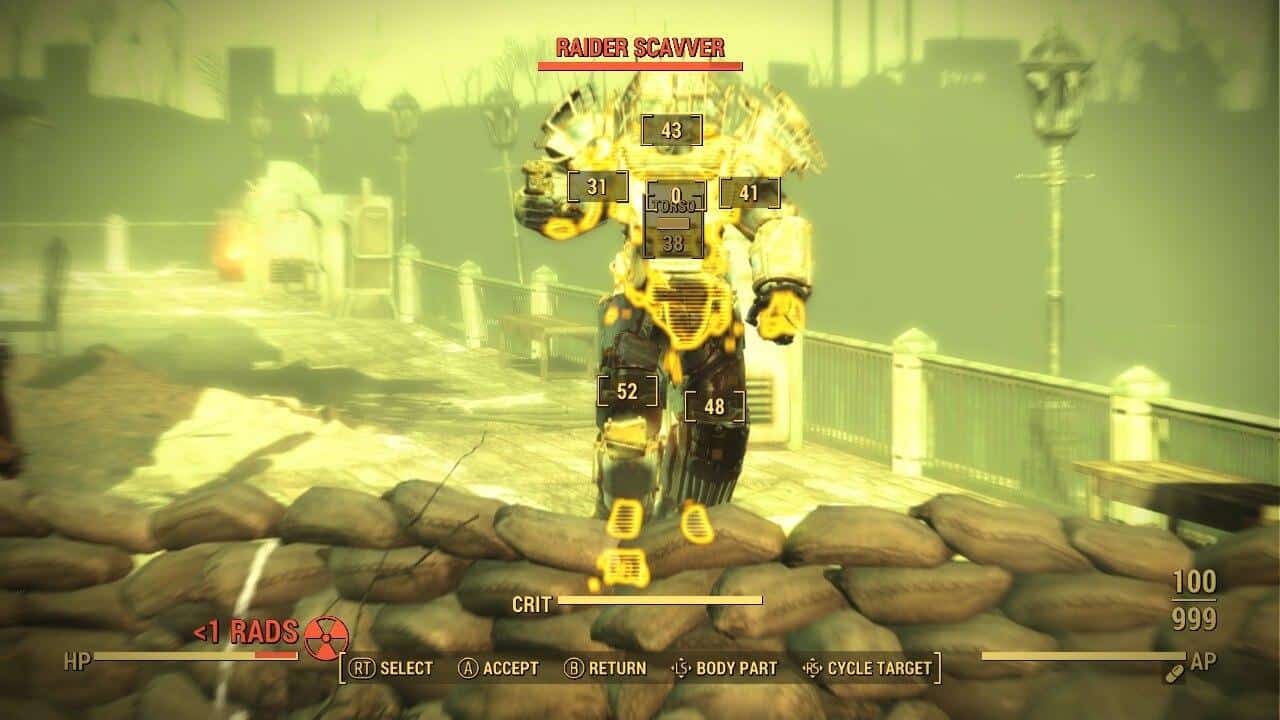
V.A.T.S. no longer freezes combat to a standstill. Instead, it slows it to a crawl. You now have the ability to cancel V.A.T.S. actions which is great if you need to reposition for a shot. V.A.T.S. also now has a critical system. By building up your critical meter, you can have a guaranteed critical hit on standby to use whenever you want. It’s an excellent just-in-case.
If you want some added spice in your Fallout 4 experience, try Survival Mode. You can’t fast-travel and have to constantly worry about hunger, thirst, illness, and sleep depravity.
Fallout 4 is a big step in the right direction towards modernizing Fallout, but a leap backward as an RPG franchise. It’s more streamlined than Fallout 3 by a wide margin. Skills are gone, and there’s no level cap. Companions don’t die, and the dialogue system is worse. There’s a radiant questing overload in Fallout 4. There are multiple factions you can do quests for, but they all send you to the same locations for the same reasons.
Fallout 3 also had plenty of copy/paste design elements, but they did a better job hiding them than Fallout 4.
And no, I didn’t forget about it. There’s the settlement system.
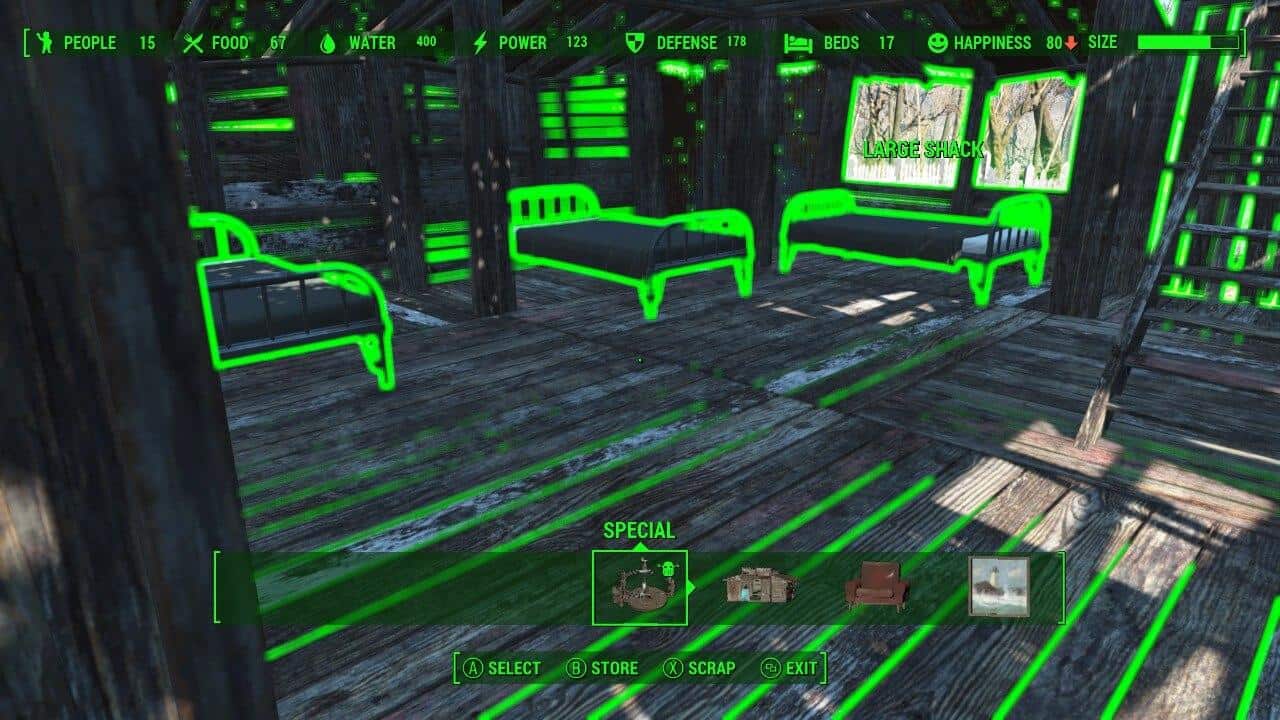
Preston Garvey is annoying. He never stops giving you quests. Settlers are useless. Give them gauss rifles, and they’ll still beg you to help them with two ghouls halfway across the map.
The marquee new mechanic of Fallout 4 is incredibly lazy and shallow. You need to put in far more effort than Bethesda did to get anything out of it.
DLC
Fallout 3
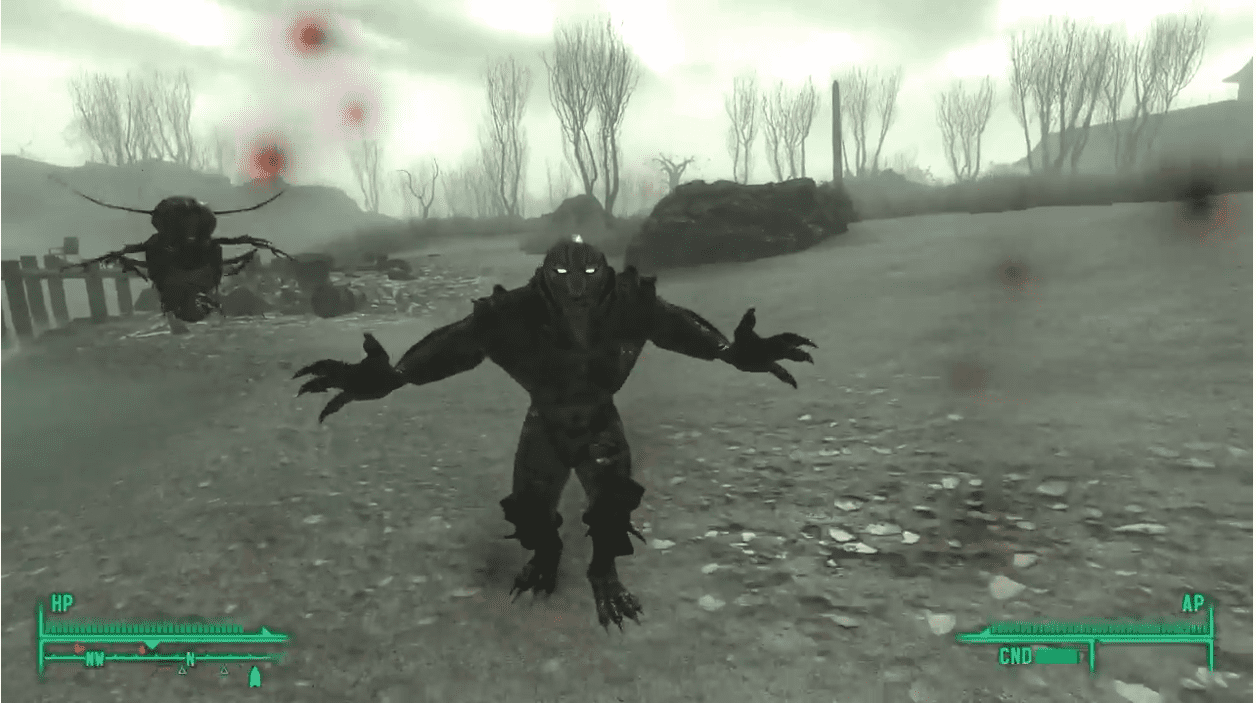
Fallout 3 is a product of a bygone era, where 99% of DLC were standalone campaigns or expansion packs. Those were the days.
Well, kind of. Fallout 3’s DLC is hit-and-miss.
Broken Steel increases the level cap and introduces new enemies and weapons. That’s good. What isn’t good is Bethesda’s attempt to fix/retcon Fallout 3’s original terrible ending. The story still sucks.
The Pitt is my favorite of the bunch. Fallout 3’s Karma choices are painfully black-and-white. The Pitt adds some much-needed grey territory, though it’s a short DLC. Operation: Anchorage and Mothership Zeta work on paper as concepts but not in practice in Fallout 3. Military campaigns and corridor shootings in a game with poor shooter mechanics are bad ideas.
The best overall DLC is Point Lookout. It’s the longest, most challenging, and provides a welcome, albeit familiar, change in scenery. There’s a fair share of side quests to complete too. I have no complaints about this one.
One universal pro of Fallout 3’s DLC is the rewards. They’re pretty busted. Some of them, like Operation: Anchorage’s rewards, trivialize Fallout 3.
Fallout 4
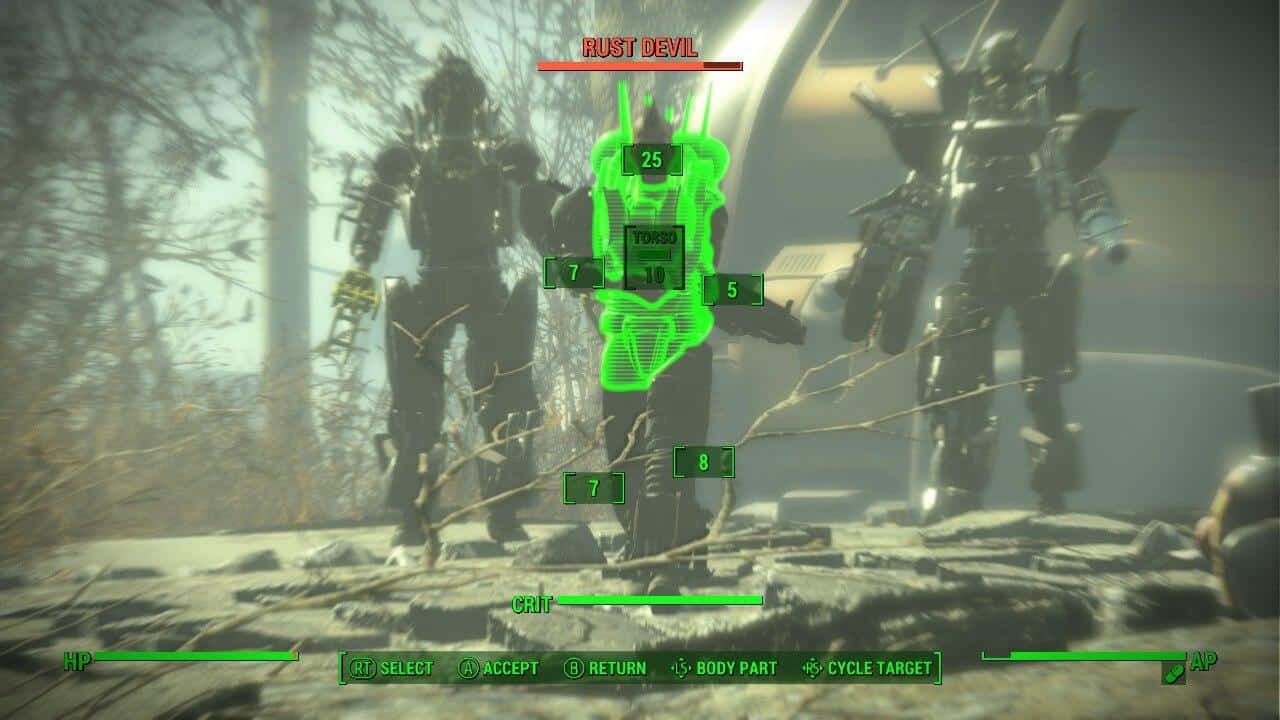
Fallout 4 is a modern game with modern game DLC shenanigans. That means a season pass and DLC that are just item add-ons instead of actual side campaigns.
But to be fair, Nuka-World and Far Harbor are complete side campaigns. They’re lengthy, like Point Lookout, and pretty fun romps. Except for Nuka-World if you’re roleplaying as a patron saint because you can’t do anything, really. Far Harbor’s plot is initially intriguing but becomes predictable.
The Automatron DLC brings back The Mechanist from Fallout 3 and adds a robot-theme raider faction, the Rust Devils. They’re fun to fight and initially pretty challenging, and the campaign to track down The Mechanist is cool. You also get Ada, a new robot companion. And you can modify Codsworth, so there’s that.
Overall, I would say Fallout 4’s DLC lineout is a 6/10. The writing really lets down a lot of the otherwise fun content in Fallout 4. Fallout 4 isn’t as good a looter shooter as pure looter shooters, and it isn’t a good RPG.
Which Is Better?
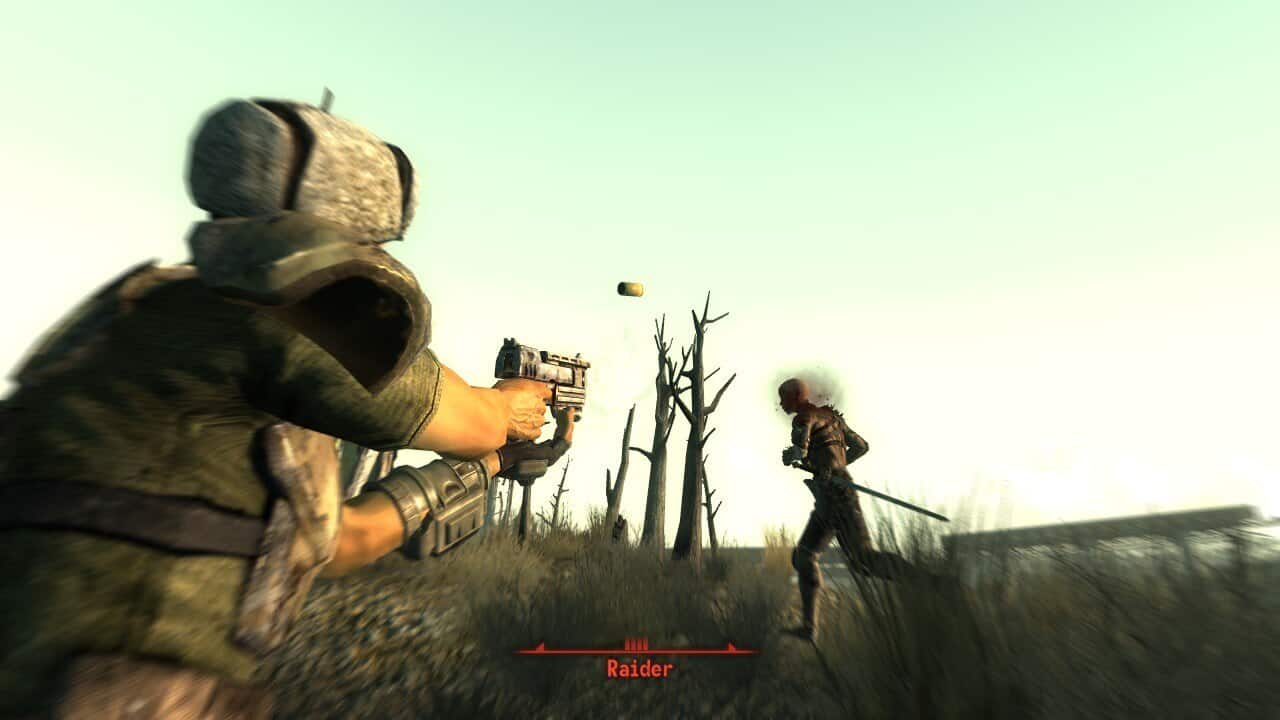
Winner: Fallout 3
As a sandbox, Fallout 4 blows Fallout 3 out of the water. Modders come up with some pretty incredible Fallout 4 mods, like FROST. Bethesda recently announced that Fallout 4 would be getting a next-generation upgrade. I can’t wait to see what modders do with Fallout 4 on next-gen consoles.
But we’re talking about which of Bethesda’s Fallout games is better. And in that debate, it’s a pretty easy win for Fallout 3. As I mentioned earlier, Fallout 4’s visuals feel more like a standard open world than a Fallout game. The inconsistent tone doesn’t lend well to a Fallout narrative, either. Fallout 2 is hilarious and full of fourth-wall breaks, but Black Isle Studios did a much better job balancing seriousness and goofiness.
Fallout 3 isn’t a perfect game, either. It’s a Fallout game with flaws. But Fallout 4 is a flawed game that’s trying to be Fallout. And it largely fails. It’s fun, but there are plenty of fun games out there. There’s only one Fallout.
Fallout 4 does a great job modernizing gameplay elements of past Fallout games. But if modernizing Fallout means stripping the series down to the point where it’s barely Fallout anymore, call me Jon Snow because I don’t want it.
Despite its flaws, Fallout 3 is enough of a Fallout experience for Fallout fans to have fun with it.
Best Alternatives
Fallout 3:
- The Elder Scrolls IV: Oblivion
- Fallout: New Vegas
- Metro 2033
- Far Cry 3
Fallout 4:
- The Elder Scrolls V Skyrim
- Borderlands
- Mad Max
- RAGE
- The Outer Worlds
- Cyberpunk 2077
- Deus Ex: Human Revolution
FAQs
Question: Which game have you played more: Fallout 3 or Fallout 4?
Answer: Right now, I have more hours in Fallout 3. But with mods like FROST and the upcoming Miami mod, I’m sure Fallout 4 will take the lead eventually.
Question: Who is your favorite companion in Fallout 3 and 4?
Answer: My Fallout 3 favorite is Charon because he has the most accurate, long-range combat shotgun in history. My favorite Fallout 4 companion is Deacon because he seems the most chatty. You’d think that honor would go to Piper, the reporter, but no. It seemingly takes her only five minutes to run out of unique things to say.
Question: Will Bethesda’s next Fallout be coming out anytime soon?
Answer: Probably not. Bethesda stated their next Fallout game would come out after The Elder Scrolls 6. And seeing as how we don’t even have a trailer for The Elder Scrolls 6 6 yet, I expect it will be a while before Fallout 5 is a thing.
Conclusion
Despite the issues I have with Fallout 3 and Fallout 4, I do think both games are well worth playing. I have hundreds of hours in each of them and still manage to come across things I’ve never seen before.
We’re slowly creeping up on Fallout 3’s 15-year anniversary, which is shocking to believe. That means it’s getting old. For a lot of new-generation gamers, it’s already archaic. And an unfortunate trend amongst new-generation gamers is the inability to play older games. A trend that I will continue to push back against every chance I get. Fallout 3 is one Fallout you’ll want to crawl out through even 14 years later.
As for Fallout 4, even without mods, it’s still fun. Fallout with some modern-day combat feels just right. And with mods, it’s a sandbox I’ll be happy to go back to for years to come.
Hopefully, when Fallout 5 comes out, I won’t bother with a comparison between that and Fallout 4. Because hopefully, Fallout 5 will be better than 3, 4, and 76 combined. That’s the Fallout everyone deserves.
Can Bethesda pull it off? I wish. Almost as much as a nuclear winter (In case anyone was wondering which modern Fallout I think is the best, there ya go).
Continue reading related game comparisons from the Fallout franchise:

